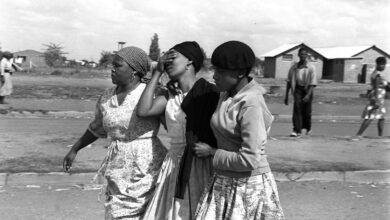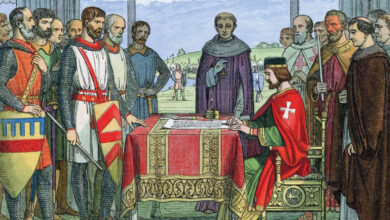
Podcast: Play in new window | Download
Coming in at a mere 278 words, the Gettysburg Address is one of the most famous speeches ever given by anyone, not just by an American president. At the time President Abraham Lincoln gave it, he thought it was never going to amount to much, but the years since have told a different account. There are five copies known to exist of the speech, each one with its own story to tell.
The speech was given by President Lincoln at the Gettysburg military cemetery on 19 November 1863 at the end of the dedication ceremonies. The cemetery was established approximately four months after the horrific Battle of Gettysburg, Pennsylvania. The battle took place over 1-3 July 1863 during the American Civil War. The cemetery was constructed on just a part of the battlefield, seventeen acres in total.
The Battle of Gettysburg was a watershed moment in the war. General Lee had kept trying to advance on the north using different tactical paths, but his defeat at Gettysburg signalled the last of his efforts to do so. He withdrew from Gettysburg and began the great retreat back south again. Both sides suffered tremendous losses – over 45,000 soldiers were either killed, captured, or injured at Gettysburg. Though many of the battles were brutal, this one was one of the worst.
Lincoln had been invited to attend the ceremony by David Wills, a Gettysburg resident and local attorney, who led the cleanup process of the battlefield once the war had moved to its next destination. Wills had been tasked with this unpleasant project by the governor of the state, Andrew Curtin. Wills wanted Lincoln there to give a speech that would remind people that this war and this battle had not been in vain. He wished for the president to encourage the Union soldiers who survived and to let them know that their fellow soldiers would be remembered forever.
Lincoln took all of this to heart when he crafted the speech. At the time, it was the middle of the Civil War, and losses on both sides kept mounting. The country was exhausted and needed some inspiration. It was up to Lincoln as the leader to renew the effort and finish what had been started. He had to remind everyone that this was not just about the Union, but rather a reminder of America’s very being.
Like many of Lincoln’s speeches as president, he focused on equality and the general freedoms all Americans should be able to enjoy. He concluded with the famous line, “…that this nation, under God, shall have a new birth of freedom—and that government of the people, by the people, for the people, shall not perish from the earth.”
Also invited to speak that day by Wills was Edward Everett, a famous speaker of the time, who addressed the crowd for over two hours. Lincoln’s speech was only two minutes long, yet it is his concise words that the world remembers some 150-plus years later. Everett later confessed that he wished he could have done so well. Lincoln, on the other hand, once said of the Address, “…the world will little note, nor long remember what we say here.”
Despite Lincoln’s lack of confidence in his words, at his funeral in June 1865, Massachusetts Senator Charles Sumner remarked that everyone had taken notice of the speech and that it would indeed live on forever, perhaps even more notably than the battle.
Lincoln’s words are still listened to, studied in school, and recited by heart. Its brevity makes it a relatively simple passage to memorize. The ending words are also engraved in the Lincoln Memorial in Washington, D.C. The message and meaning, however, take much longer to unpack.
Today, there are five copies of the speech that still exist. Though urban legend has it that Lincoln wrote it in the stagecoach on the way to the event or on the train on the way up from D.C., it was actually written at a desk prior to the dedication ceremony. Two of the copies were written in advance of the speech, while the other three were designated to be used at later benefit events for soldiers.
The most famous copy is called the Bliss Copy. It is the one used in most reproductions, and it is the version used on the Lincoln Memorial. It was written specifically for Colonel Alexander Bliss to use to raise funds for soldiers because the Bancroft Copy was unable to be duplicated. Lincoln had used both sides of the paper in that edition so it could not be copied easily. George Bancroft was the stepfather of Colonel Bliss and was a noted historian of the time. The Bliss copy is visible in the Lincoln Room of the White House, and it is the only one Lincoln signed. The Bancroft Copy can be found at Cornell University.
The first copy made was the Nicolay Copy, the one given to John Nicolay who was Lincoln’s personal secretary. It was written partly on White House letterhead and partly on other paper. This copy can be found at the Library of Congress, alongside the Hay Copy.
The second copy or draft is the Hay Copy. John Hay was a White House assistant who went with Lincoln to the cemetery. Lincoln himself made some wording changes on this version.
The last copy is the Everett Copy, so named because it was a copy given to Edward Everett who wanted to have a copy of the speech for himself. The Abraham Lincoln Presidential Library has this edition.
Though the Civil War wouldn’t end for another eighteen months after the cemetery dedication, this small speech had major ramifications for the Union, helping to rebuild its shattered morale. In the subsequent years, some scholars have even said that this speech is the very definition of democracy in its most succinct form.
Podcast: Play in new window | Download





